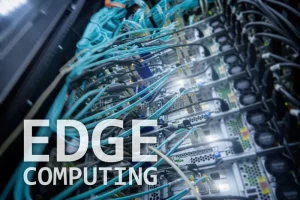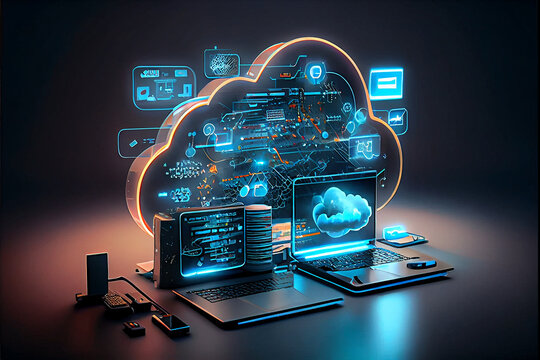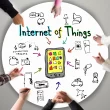The Rise of Edge Computing: Revolutionizing Data Processing for Real-Time Solutions
Edge computing is transforming how we process and store data by bringing computation closer to data sources like IoT devices and local servers. As opposed to traditional cloud computing, where data is sent to a centralized location, edge computing enables data processing at the “edge” of the network, closer to the user. This shift is driven by the demand for real-time responses in industries such as autonomous vehicles, healthcare, and smart cities. Integrating with technologies like 5G and Artificial Intelligence (AI), edge computing has the potential to reshape industries by optimizing bandwidth, enhancing security, and reducing latency.
What is Edge Computing?

Edge computing is a distributed model that places computing resources closer to the point of data generation. This approach contrasts with the traditional centralized model where data travels long distances to data centers for processing. Instead, edge computing enables local processing, which reduces latency, conserves bandwidth, and enhances data privacy.
How Edge Computing Works with 5G Networks
The rollout of 5G networks has accelerated the adoption of edge computing. With its high-speed and low-latency capabilities, 5G enhances edge computing’s efficiency, enabling faster data transmission and processing at unprecedented speeds. This synergy is essential for applications requiring real-time decision-making, such as autonomous vehicles, virtual reality, and industrial automation. For instance, 5G-enabled edge computing allows autonomous vehicles to process data from surrounding sensors instantly, ensuring safer and more responsive navigation.
Multi-access Edge Computing (MEC): The Next Evolution
Multi-access Edge Computing (MEC) is a concept defined by the European Telecommunications Standards Institute (ETSI) to bring cloud computing closer to mobile networks. MEC enhances edge computing by facilitating data processing directly within a mobile network, enabling applications to reduce congestion and improve performance. By integrating MEC, businesses can achieve faster data analysis and improve user experiences in applications that demand minimal latency, like video streaming and online gaming.
Benefits of Edge Computing
-
Reduced Latency
By processing data at or near its source, edge computing minimizes the time needed to send and retrieve data from a centralized server, making it ideal for real-time applications. For instance, in healthcare, wearable devices can monitor patient vitals continuously, allowing medical personnel to respond immediately to any irregularities without the delay associated with cloud processing.
-
Enhanced Data Security and Privacy
Edge computing reduces the need to transmit sensitive data across networks, lowering the risk of breaches. Local processing allows organizations to keep data closer to the source, enhancing privacy and reducing the exposure to potential cyber threats. Financial institutions, for example, can process sensitive transactions on-site without transmitting data to a remote server, significantly reducing security risks.
-
Bandwidth Optimization
Traditional cloud computing requires vast amounts of bandwidth to transmit large datasets to central servers. Edge computing, however, processes data locally, conserving bandwidth by only sending critical information for further analysis. This optimization is particularly beneficial in remote or rural areas where bandwidth may be limited. For example, agricultural IoT devices in rural farms can locally analyze crop and soil data, transmitting only essential insights to the cloud.
-
Scalability and Cost-Effectiveness
Edge computing’s decentralized structure enables organizations to scale more efficiently by distributing the workload across multiple edge nodes. This approach also reduces costs by lowering the need for extensive data center infrastructure. For instance, retailers implementing edge devices in stores can process data locally, saving on cloud storage and enabling faster responses to customer needs.
-
Reliability and Resilience
Edge computing enhances reliability by reducing dependence on central servers. Local processing ensures that critical applications remain operational even if there are disruptions in connectivity. In industrial automation, edge computing allows factories to maintain uninterrupted operation during network outages, ensuring continuous production and safety monitoring.
Applications and Examples of Edge Computing

-
Autonomous Vehicles and Edge AI
Autonomous vehicles rely on real-time data processing for navigation, obstacle detection, and decision-making. By integrating AI at the edge, vehicles can instantly process data from cameras, sensors, and radar without relying on remote servers. Tesla, for example, uses edge computing to enable real-time data processing within each vehicle, ensuring responsive and adaptive navigation.
-
Smart Cities
Edge computing plays a pivotal role in developing smart cities by enabling real-time monitoring and management of urban infrastructure. Traffic lights, for instance, can use edge devices to adapt signals based on real-time traffic data, reducing congestion and enhancing safety. In Barcelona, Spain, smart city initiatives utilize edge computing to manage energy usage, optimize waste collection, and monitor air quality, making the city more efficient and sustainable.
-
Healthcare
Edge computing enables healthcare providers to perform real-time data processing in critical applications. For example, in telemedicine, wearable devices can monitor patients remotely, analyzing vitals and alerting healthcare providers of any anomalies immediately. Philips Healthcare leverages edge computing in devices like patient monitors and imaging equipment, allowing real-time analysis and fast response times.
-
Industrial Automation
In manufacturing, edge computing enhances operational efficiency by enabling predictive maintenance and process optimization. By analyzing data from machines locally, edge computing can identify issues before they lead to failures, reducing downtime and costs. For instance, Siemens uses edge technology in its manufacturing plants to monitor equipment performance and make adjustments in real time.
-
Retail
Edge computing is transforming the retail industry by enabling personalized customer experiences and improving store operations. By processing data from in-store sensors and cameras, retailers can track foot traffic, optimize shelf stocking, and personalize promotions in real time. Amazon Go stores, which utilize edge devices to monitor customer movements and purchases, offer a checkout-free shopping experience that enhances convenience and reduces wait times.
-
Agriculture
Agriculture is embracing edge computing to improve yield, reduce costs, and manage resources efficiently. Edge devices installed on farms can analyze soil conditions, weather, and crop health, providing farmers with insights to make data-driven decisions. John Deere, a leader in agricultural technology, incorporates edge computing in its machinery to offer precision farming solutions, optimizing planting, watering, and harvesting.
Future Trends in Edge Computing

-
Integration of AI with Edge Computing
Artificial Intelligence (AI) and edge computing are converging to create powerful solutions that process data in real-time without relying on central servers. Known as Edge AI, this trend enables autonomous systems, like drones and robots, to make decisions on the fly. Edge AI applications are expanding into retail, logistics, and beyond, as businesses seek faster, data-driven decisions.
-
Rise of Edge Cloud Platforms
Edge cloud platforms are emerging as a hybrid solution, combining the scalability of cloud computing with the low-latency benefits of edge computing. Companies like AWS and Microsoft Azure are launching edge platforms that allow users to deploy and manage applications across distributed edge locations seamlessly.
-
Enhanced Security Measures
With increased data processing at the edge, security and privacy concerns are on the rise. Companies are investing in secure edge computing solutions, integrating features like data encryption, secure boot processes, and threat detection to safeguard sensitive data.
-
Growth in Multi-access Edge Computing (MEC)
MEC is gaining popularity, especially in telecom, as it leverages network infrastructure to bring computing resources closer to the end-user. The future of MEC looks promising as it finds applications in smart city projects, autonomous transport, and mobile gaming, with telecom operators enhancing their networks to accommodate this technology.
-
Edge Computing in Remote Industrial Sites
Edge computing is expanding into remote areas such as oil rigs, mines, and rural locations where connectivity is limited. Edge devices in these locations can process critical data locally, ensuring operational continuity and safety without relying on constant internet access.
Conclusion
Edge computing is reshaping industries by providing fast, secure, and efficient data processing solutions closer to the source. From autonomous vehicles and smart cities to healthcare and agriculture, edge computing enables real-time insights and responses that traditional cloud computing cannot offer. As 5G networks expand and technologies like AI and MEC evolve, the potential for edge computing will only grow.
Adopting edge computing can lead to improved scalability, enhanced security, and optimized bandwidth, empowering organizations to meet the demands of modern, data-driven applications. With a future that promises even greater integration and innovation, edge computing is set to play a critical role in advancing real-time technology solutions across various sectors.












